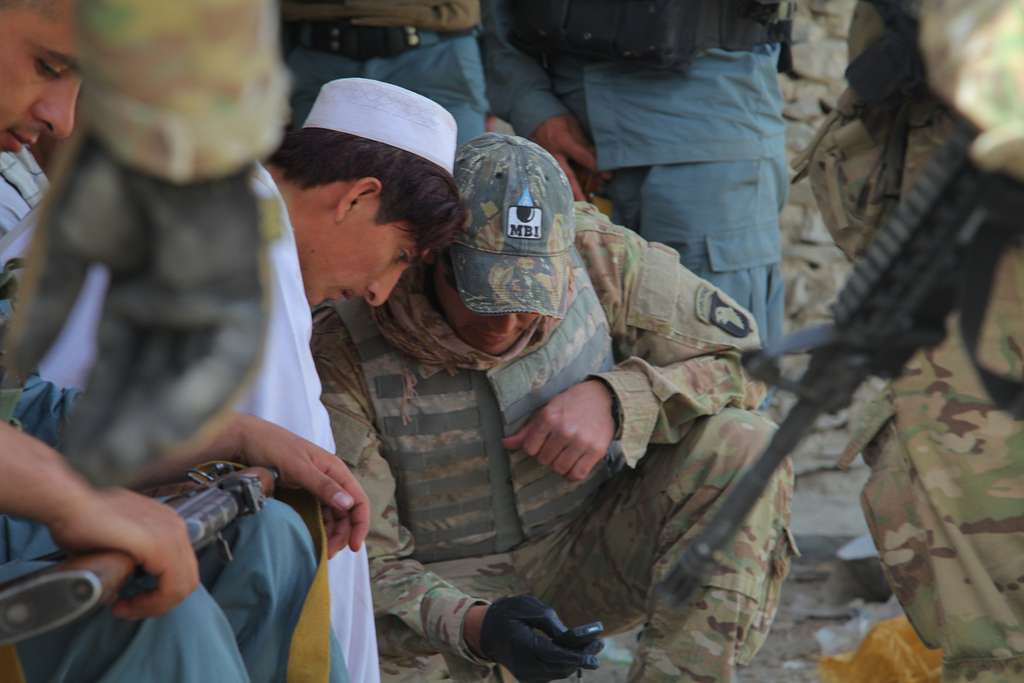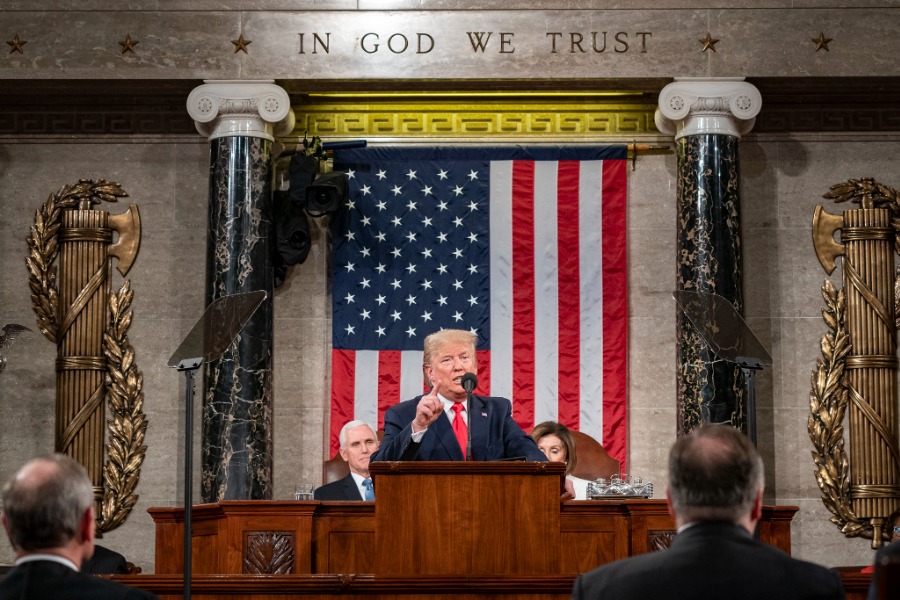Four of The Would-be ISIS AUMFs
Published by The Lawfare Institute
in Cooperation With

SEC. 2. AUTHORIZATION FOR USE OF ARMED FORCES. (a) IN GENERAL.—The President is authorized, with the close consultation, coordination, and cooperation with NATO and regional allies, to use all necessary and appropriate force against those countries, organizations, or persons associated with or supporting terrorist groups, including al Qaeda and its regional affiliates, the Islamic State of Iraq and Syria, al Shabaab, Boko Haram, and any other emerging regional terrorist groups that share a common violent extremist ideology with such terrorist groups, regional affiliates, or emerging terrorist groups, in order to eliminate all such terrorist groups and prevent any future acts of international terrorism against the United States or its allies by such terrorist groups, countries, organizations, or persons.Rep. Wolf was quoted in a statement saying:
For far too long the Obama Administration and the Congress have been debating whether or not authority exists for action to address this threat,” Wolf said. “This resolution would provide clear authority for the president and our military, working with coalition partners, to go after these terrorists, whether in Syria, Iraq or elsewhere. We cannot continue operating on outdated authorities passed 13 years ago; it is time for this Congress to vote.That brings us to yesterday, when Senator Bill Nelson (D-FL), Rep. Darrell Issa (R-CA), and Senator James Inhofe (R-OK) all introduced their own proposals. Senator Nelson's authorization explicitly bars the president from putting American combat troops back into Iraq. It also attaches a sunset clause that would ensure the authorization expired automatically, unless renewed, after three years. Operative clauses for Nelson Authorization to Use Force, again noted here for the sake of a preview only:
SEC 2. AUTHORIZATION FOR USE OF UNITED STATES FORCES AGAINST THE ISLAMIC STATE IN IRAQ AND THE LEVANT (a) IN GENERAL.—That the President is authorized to use appropriate force against the Islamic State in Iraq and the Levant (ISIL) in order to prevent terrorist attacks on the people and interests of the United States and our allies. (b) NO AUTHORIZATION FOR USE OF ROTATIONAL GROUND FORCES.—The authorization in this section does not include authorization for the use of rotational ground forces. (c) EXPIRATION.—The authorization in this section shall expire on the date that is three years after the date of the enactment of this joint resolution.Senator Nelson was quoted, saying:
This is a barbaric group that’s committed heinous acts of torture and murder, and we have to go after them now - not only in Iraq, but in Syria as well.Representative Darrell Issa's authorization has a tighter timeframe attached: the bill expires 120 days from enactment, and imposes, within 60 days of enactment, reporting requirements regarding the strategy employed by the executive branch and its budgetary effects. The authorization also repeals the prior 2002 Iraq AUMF. Below is the operative language for Issa Authorization to Use Force:
SEC. 2 AUTHORIZATION FOR LIMITED USE OF UNITED STATES ARMED FORCES (a) AUTHORIZATION.—The President is authorized to use the Armed Forces of the United States as the President determines to be necessary and appropriate in order to defend the national security of the United States against the continuing threat posed by the Islamic State of Iraq and the Levant (ISIL). (b) TERMINATION.—The authority of subsection (a) shall terminate at the close of the date that is 120 days after the date of the enactment of this joint resolution. SEC 3. REPEAL OF PRIOR AUTHORIZATION FOR USE OF UNITED STATES ARMED FORCES The Authorization for Use of Military Force Against Iraq Resolution of 2002 (Public Law 107-243; 50 U.S.C. 1541 note) is hereby repealed. SEC 4. REPORTS TO CONGRESS (a) REPORT.—From Rep. Issa's statement:(1) IN GENERAL.—Not later than 60 days after the date of the enactment of this joint resolution, the President shall submit to the Speaker of the House of Representatives, the President pro tempore of the Senate, and the committees of Congress specified in subsection (c) a report on the following:
(A) The status of all actions taken pursuant to the exercise of the authority under section 2.
(B) A description of all proposed actions that the President determines may be necessary and appropriate to combat the Islamic State of Iraq and the Levant's (ISIL) threats to the United States and Middle East region.
(C) The status of engagement of allies of the United States and international coalitions in combating ISIL's threats.
(2) CONSOLIDATION.—To the extent that the submission of any report described in this subsection coincides with the submissions of any other report on matters relevant to this joint resolution otherwise required to be submitted to Congress pursuant to the reporting requirements of the War Powers Resolution, all such reports may be submitted as a single consolidated report to the Speaker of the House of Representatives, the President pro tempore of the Senate, and the committees of Congress specified in subsection (c).
(b) BUDGETARY EFFECTS.—Not later than 60 days after the date of the enactment of this joint resolution, the President shall submit to the Speaker of the House of Representatives, the President pro tempore of the Senate, and the committees of Congress specified in subsection (c) the estimated budgetary effects of actions proposed under the reporting requirements of subsection (a). (c) COMMITTEES OF CONGRESS.—The committees of Congress specified in this subsection are—(1) the Committee on Foreign Affairs, the Committee on Armed Services, and the Committee on Oversight and Government Reform of the House of Representatives; and
(2) the Committee on Foreign Relations, the Committee on Armed Services, and the Committee on Homeland Security and Governmental Affairs of the Senate.
"It’s past time for President Obama to define a course of action,” said Congressman Issa. “The brutal murder of two American journalists was a shocking wake up call for the public, but the threat ISIL poses to America’s national interests has grown unchecked for some time. We need a strategic plan to stop the spread of their hateful ideology and violence. The defeat of ISIL must be a top priority – this resolution authorizes the use of force for a definite period and requires President Obama to develop and share his strategy with Congress and the American people.Finally, Senator James Inhofe has also introduced an authorization for the use of force. His AUMF also requires that the president submit to Congress a strategy report, but requires that he do so within 15 days of enactment. The authorization further requires that the president provide Congress with a progress report to the implementation of that strategy every 90 days until the cessation of hostilities. Below is the operation language of the Inhofe Authorization to Use Force:
SEC. 2. AUTHORIZATION FOR USE OF UNITED STATES ARMED FORCES (a) IN GENERAL.—That the President is authorized to use all necessary and appropriate force in order to defend the national security of the United States against the threat posed by the organization called the Islamic State (of "IS"), formally known as the Islamic State of Iraq and the Levant, as well as any successor organization. SEC. 3. REPORTS TO CONGRESS. (a) STRATEGY.—Not later than 15 days after the date of the enactment of this joint resolution, the President shall submit to Congress a written report setting forth a comprehensive strategy of the United States to defeat the organization called the Islamic State, as well as any successor organization, by using all appropriate military, economic, and political capabilities of the United States. (b) IMPLEMENTATION OF STRATEGY.—Not later than 90 days after the submittal of the report required by subsection (a) and every 90 days thereafter, the President shall submit to Congress a written report setting forth a current comprehensive description and assessment of the implementation of the strategy set forth in the report required by subsection (a). If the President makes a substantive change to the comprehensive strategy, the President will immediately submit a written report to Congress which articulates the change, the reason for the change and the change's effect on the rest of the comprehensive strategy.And, a statement from Senator James Inhofe, in part, reads:
The resolution authorizes the President to use all necessary and appropriate force to protect Americans and defend national security interests against IS and any successor organization and gives the President flexibility to adjust efforts to defeat IS as the terrorist organization evolves or changes. It also requires the President to deliver a written comprehensive strategy to Congress within 15 days of enactment and requires updates on the strategy implementation every 90 days. "The Islamic State (IS) is the greatest terrorist threat the United States has faced since the attacks of 9/11, 13 years ago,” said Inhofe. “Americans are rightfully concerned for the evolution of IS into a well-funded, well-networked terrorist army and for the hesitation by the White House to treat this organization as such. It is estimated that 12,000 foreign fighters have joined IS, including about 2,500 who hold Western passports, giving them easy access to Western countries and a likely avenue to commit acts of terrorism on American soil. In their minds, the brutal execution of two Americans is just the beginning of greater attacks on America. And we must treat it for what it is: a first act of war against the American people. It demands a response."Many variables remain. Among other things, it remains to be seen how hard these members will push their proposals, and relatedly whether President Obama will seek explicit legislative authorization (he has suggested he believes that he already has the authorization he needs) or if he will pursue avenues---perhaps by contending that congressional appropriations for military action against the group amount to authorization, as Ryan Goodman over at Just Security has suggested. Meanwhile, as Lawfare's own Jack Goldsmith has theorized, the administration may be making piecemeal use of War Powers Resolution letters, so as to later argue that each letter was mission-specific and started the running of separate, 60-day time clocks.***





